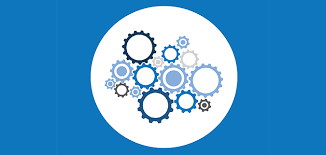INTRODUCING THE RPA BIBLE : YOUR PRACTICAL AND TECHNICAL GUIDE TO RPA
- amalabdreamz
- Nov 17, 2018
- 2 min read
INTRODUCTION :
The world is increasingly digitalized. As more consumers rely on digital technologies, companies must rethink how they approach process optimization and their legacy systems. At the forefront of this transformation is Robotic Process Automation (RPA), which is changing traditional outsourcing models and paving the way for intelligent automation technologies. However, obtaining a license for the RPA tool and its connection to a process without a solid strategy and action plan is not a formula for success.

Implementing RPA is more complex than most people think. According to HfS Research, almost half of the RPA projects did not meet or barely met expectations. We can say from experience that it requires a disciplined and reflective strategy, as well as an understanding of the technical requirements and capabilities of all stakeholders involved.
To address the need for comprehensive education, Symphony has collaborated with HfS Research to provide an actionable evaluation supported by RPA vendor market research and the capabilities that should be expected from RPA tools. This comes in the form of an electronic book entitled, The RPA Bible: Your practical and technical guide to the RPA. We believe that the underlying technology education, when combined with an identified problem, is the ideal launching point for an RPA initiative.
The RPA Bible was developed by technical and business experts from Symphony and HfS, many of whom have been leaders in the outsourcing industry and RPA for decades. The technical components of this robust resource have been extracted from a series of benchmarking tests of the best RPA tools in the most common business environments.
Some key points of the electronic book:
The goal of digital transformation is what HfS Research calls OneOffice: an organizational structure where there are no barriers between departments, just a series of business processes to serve the customer
Triple A Trifecta: automation (through RPA), analysis and artificial intelligence (AI) is a level C priority
RPA is the backbone of digitization in a business.
After thorough testing of the best RPA tools, we have identified eight different technical elements to consider their implementation.
To get a best rpa training — rpa training in chennai | best rpa training in chennai | rpa training in bangalore | rpa training in pune | rpa online training | rpa training in velachery | rpa training in tambaram | rpa training in sholinganallur | rpa training in annanagar | rpa training in kalyannagar | rpa training in electronic city | rpa training in btm | rpa training in marathahalli | best rpa training in pune | rpa training in usa | rpa interview questions and answers | automation anywhere interview questions and answers | blueprism interview questions and answers | uipath interview questions and answers




Comments